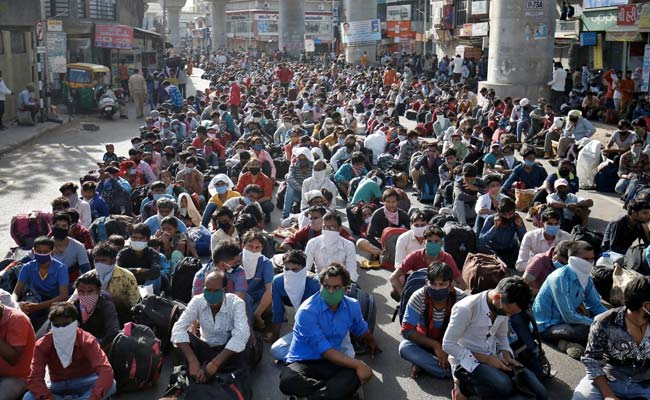Unemployment rate dips in India

Unemployment rate dips in India
In July, India experienced a decline in the overall unemployment rate, primarily driven by increased demand for agriculture labour in rural areas with the onset of monsoon rains. The total joblessness rate dropped from 8.45% in June to 7.95%, as reported by private forecaster Centre for Monitoring Indian Economy (CMIE).
The rural unemployment rate also showed improvement, falling from 8.73% in June to 7.89% in July. However, the urban unemployment rate saw a slight increase, rising to 8.06% from 7.87% during the same period.
The improvement in rural unemployment can be attributed to the pickup in monsoon rains, which have a crucial role in watering nearly half of the nation’s farmlands. The rains have been 4% above normal so far this season, signalling a potentially positive impact on agriculture production and overall economic growth.
As monsoon rains gain momentum after a slow start, the outlook for agriculture in India appears promising. The surge in demand for agricultural labour in rural areas is a positive sign, as it indicates increased economic activity and potential growth in the agricultural sector.
The decline in overall unemployment rate and the prospect of improved agricultural production are essential factors for India’s economic recovery, particularly amid the challenges posed by the COVID-19 pandemic. The growth in rural employment could have broader implications, supporting rural livelihoods and consumption.
While the urban unemployment rate saw a marginal increase, it is worth noting that economic recovery in urban areas may take longer due to various factors, including the impact of lockdowns and restrictions during the pandemic.
In July, the rural joblessness rate in India typically experiences a decline as there is increased demand for labourers in the farming sector during the monsoon season. However, historical data indicates that the unemployment rate tends to tick up again in August after the sowing activities are completed.

Although the agriculture sector saw heightened activity with the improvement in monsoon rains, there was a drop in demand for labour in the rural non-agriculture sector in July, as noted by Mahesh Vyas, the managing director of CMIE. This decline in demand for labour in non-agricultural activities contributed to a fall in the number of rural labourers seeking employment, which subsequently led to a decrease in the rural employment rate.
The contrasting trends between the agriculture and non-agriculture sectors in rural areas highlight the seasonality of employment patterns in India. As the monsoon season progresses and sowing activities are completed, the demand for labour in farming tends to stabilize or decline. This can impact rural employment dynamics and result in fluctuations in the rural joblessness rate.
The situation emphasizes the importance of understanding the nuances of the labour market in different sectors and regions to make informed policy decisions and support job creation and economic growth in both rural and urban areas. Additionally, it underscores the need for strategies to diversify economic activities and create sustainable employment opportunities beyond agriculture to maintain stable employment rates throughout the year.
According to recent data, the labour force in rural India has witnessed a significant decline of five million individuals. Additionally, the labour force participation rate in urban areas has also fallen, indicating a broader weakness in the country’s economy.
The issue of job creation and unemployment is a critical concern for Prime Minister Narendra Modi as he seeks re-election for a rare third term in office during the upcoming national polls. Recognizing the urgency of the situation, the government has taken steps to address the rising unemployment by promising to provide one million government jobs by the end of this year. This initiative is a response to the growing discontent among the populace over the lack of employment opportunities.
)
The labour participation rate in India experienced a decline from 40.1% in the financial year 2021-22 to 39.5% in the financial year 2022-23, as reported by data analysis from CMIE. This downward trend in labour force participation further emphasizes the pressing need for effective policies and strategies to revitalize the economy and create sufficient job opportunities.
The decline in the rural labour force indicates challenges faced by the agricultural and non-agricultural sectors in rural areas. The drop in the labour force participation rate in urban areas reflects a broader economic slowdown affecting various industries and businesses. These trends suggest a need for comprehensive measures to boost economic growth and revive job creation in both rural and urban regions.
The upcoming national polls will be a critical juncture for Prime Minister Narendra Modi’s government to address the issue of unemployment and present viable solutions to tackle this pressing concern. With citizens voicing their discontent over rising joblessness, the government’s ability to fulfil its promise of creating one million government jobs will be closely scrutinized.
To achieve sustainable and inclusive economic growth, India must focus on creating an environment conducive to business development, attracting investments, and promoting entrepreneurship. Addressing skill gaps and providing adequate training to the workforce can enhance employability and facilitate a smooth transition into various industries.

Moreover, it is crucial for the government to collaborate with the private sector to stimulate job creation across different sectors of the economy. Proactive policies that promote innovation and technological advancements can also contribute to job growth in emerging industries.

As the country navigates through economic challenges and strives to recover from the impacts of the pandemic, robust job creation efforts will be essential to restore confidence, uplift livelihoods, and pave the way for sustainable economic progress. The government must formulate and implement effective employment strategies to address the growing concerns surrounding unemployment and drive India’s growth trajectory in the coming years.



